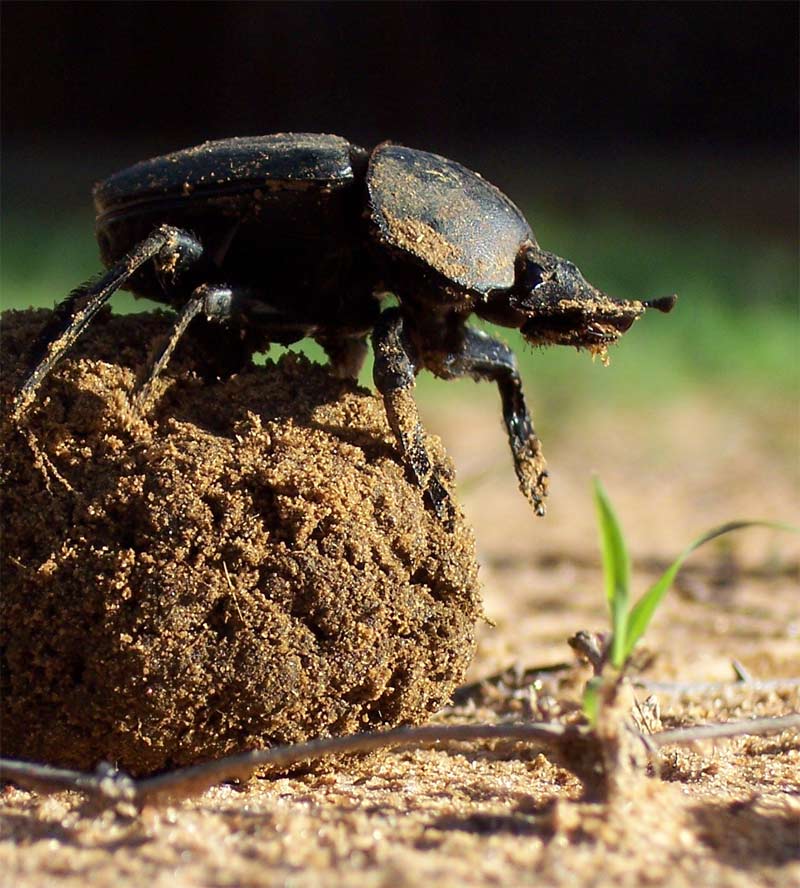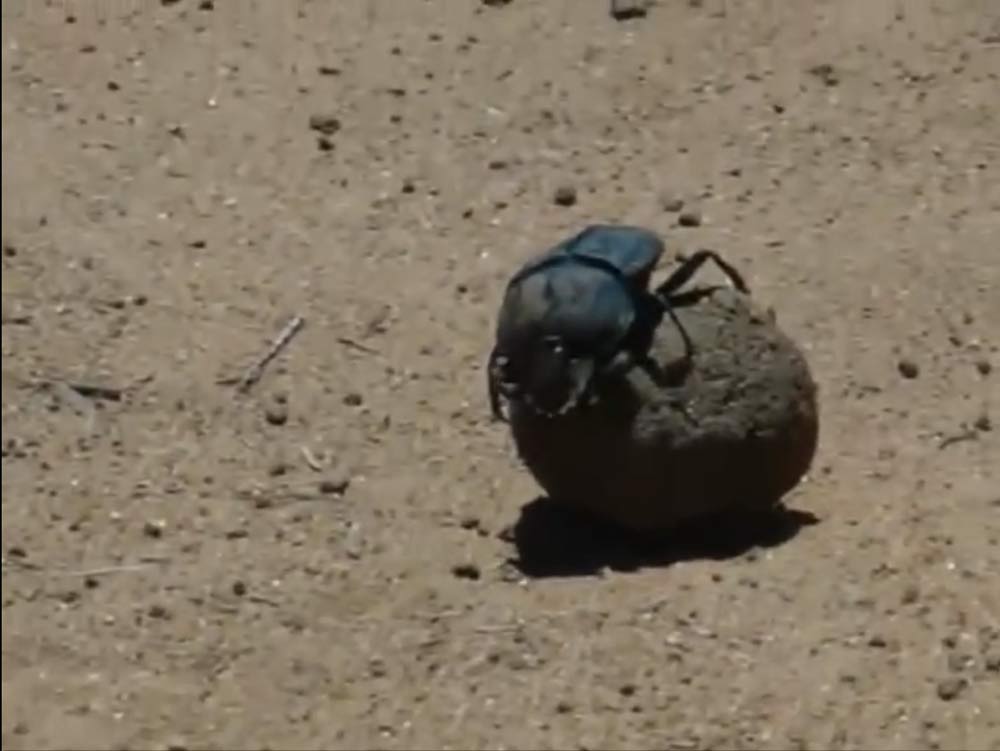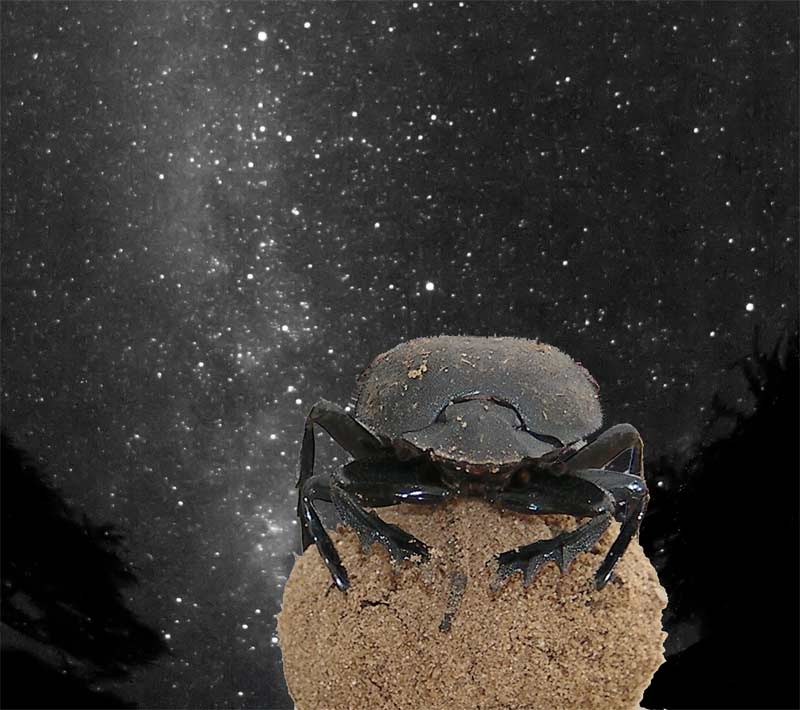In Images: Dung Beetles Dance on Poop Balls
Nature's cooler

Dung beetles roll up balls of dung to feed their young. Oddly, they often climb on top of these balls and dance around in circles. Scientists studying this mysterious behavior have found a couple reasons behind it, to keep dung beetles cool and to help them navigate using the heavens. Here, a thermal image showing a dung beetle cooling its feet on a dung ball.
Balancing act

Dung beetles roll up nutritious balls of excrement up to 50 times heavier than their own bodies to feed their young. They roll the balls walking backward, with their heads near the ground. Here, a dung beetle caught balancing on a ball of dung.
On top of the world

This dung beetle preening on top of a ball.
The right tools

Boots of rubbery silicone seem to insulate the dung beetle's feet from the hot sand.
Shoot big

Working overtime, this dung beetle moves an extra large dung ball across the hot savanna.
Curious behavior

Once atop the dung ball, the beetle preens, an act researchers are looking into as an additional cooling act.
Look to the Stars

In a study published in the Jan. 24, 2013, issue of the journal Current Biology, researchers discovered dung beetles of the species Scarabaeus satyrus can navigate using the starry sky and the glow from the Milky Way.
Get the world’s most fascinating discoveries delivered straight to your inbox.
Beetle Cap

Their experiment involved timing how long Scarabaeus satyrus took to cross a circular arena with high walls blocking views of treetops and other landmarks. They tested the insects in South Africa under a moonlit sky, a moonless sky and an overcast sky. In some trials the beetles were fitted with cardboard caps (shown here), which kept their eyes to the ground. Overall, the beetles had a difficult time traveling straight and took significantly longer to cross the arena if caps or clouds obstructed their view of the sky.
Under the Stars

Previous experiments had shown another dung beetle S. zambesianus is unable to roll along straight tracks on moonless nights when our galaxy, the Milky Way, lies below the horizon. Taken together with the Current Biology findings, these results suggest dung beetles navigate using the gradient of light provided by our galaxy.



